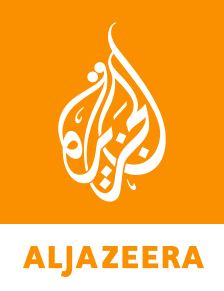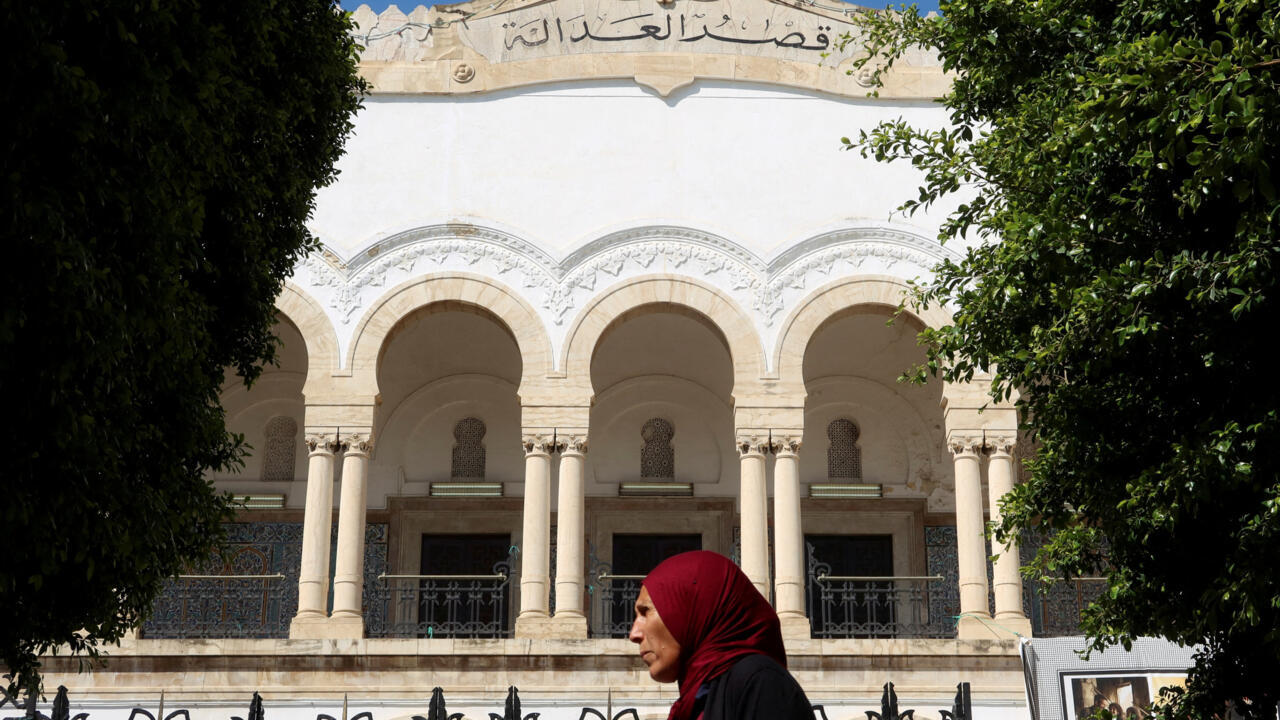Ukraine has reported dozens of civilian deaths from Russian attacks over the past week, including three killed in a late-night assault on Wednesday in the southeastern city of Dnipro.
A child was among the victims of the drone attack, which came hours before high-stakes meetings in Paris due to take place later on Thursday, during which United States Secretary of State Marco Rubio and special envoy to the Middle East Steve Witkoff are to meet French President Emmanuel Macron and other European officials to discuss the conflict.
Ukraine’s defence and foreign ministers, as well as President Volodymyr Zelenskyy’s chief of staff, are also in the French capital for talks with US and European Union delegations, though Kyiv’s delegation has not specified who it plans to meet.
But as Moscow’s self-imposed 30-day ceasefire on energy infrastructure approached its close, talks to achieve a broader ceasefire so far have showed little sign of progress.
Russia has stuck to its hardline positions while accusing Ukraine of violating the energy ceasefire, to which Kyiv never agreed.
“This temporary moratorium has not been and is not being observed by the Ukrainian armed forces,” Kremlin spokesman Dmitry Peskov told reporters on Tuesday.
Russia said Ukrainian drones targeted an electricity substation and a high-tension power line in the Bryansk region that day, an electricity substation in the occupied part of Kherson in Ukraine, and two low-pressure gas pipelines in Kursk.
Moscow’s forces claimed to have shot down seven UAVs near Shuya in the Ivanovo region on Wednesday, 260km (160 miles) east of Moscow and 500km (310 miles) from the Ukrainian border. In total, it said, 26 drones were downed over several regions of Russia.
Asked whether Russia would resume attacks on Ukrainian energy infrastructure on Friday, Peskov said, “Everything will depend on further orders from the supreme commander in chief,” a reference to Russian President Vladimir Putin.
Putin’s March 18 energy ceasefire proposal was a counteroffer to US President Donald Trump’s March 10 total ceasefire proposal, which Ukraine had agreed to. The US thus ended up with two separate ceasefire agreements, one with Moscow and one with Kyiv, to which each warring capital held the other.
“Today marks exactly a month since the Russian Federation refused to accept a full and unconditional ceasefire proposed by the American side in the negotiations,” said Ukraine’s General Staff last week. During that time, it said, Russia carried out 5,124 ground assaults, more than 3,000 of them against Pokrovsk, Toretsk and Lyman, the three Russian priority targets in Ukraine’s Donetsk region.
“Since the beginning of April alone, the Russian army has already used almost 2,800 aerial bombs,” Zelenskyy wrote on Telegram.
The US has found itself not just between two failed ceasefires but denying that it had proposed an effective partition of Ukraine following a truce.
The Times, a British daily, reported that Washington’s special envoy to Ukraine Keith Kellogg proposed partitioning Ukraine into spheres of influence “almost like Berlin after World War Two”, with Russian and NATO troops controlling different zones.
Kellogg said The Times misrepresented his proposal, which was “referencing areas or zones of responsibility for an allied force”, not including US troops, “in support of Ukraine’s sovereignty”.
But speaking during a meeting of the Commonwealth of Independent States (CIS) in Almaty on Friday, Russian Foreign Minister Sergey Lavrov said “a return to the 1991 borders, as Zelenskyy continues to demand, is impossible.”
Even Kellogg’s idea of a Berlin-style occupation by troops of different nationalities was a nonstarter for Russia, which has said it would never accept NATO troops on Ukrainian soil.
Russian Ambassador-at-Large Rodion Miroshnik told reporters on Saturday that maintaining military zones would later lead to “a new level of escalation”.
Given these divergences, Peskov said it is “hardly possible” to expect immediate results.
Russia warns Poland, Baltic nations
Moscow’s diplomatic messaging to isolate Europe was also running on all cylinders.
Peskov called EU foreign policy chief Kaja Kallas’s exhortation for EU leaders to visit Kyiv, not Moscow, on May 9, the anniversary of the end of World War II, an “aggressive statement”.
Russian ambassador to Germany, Sergey Nechayev, told Russia’s Izvestia newspaper he expected a new coalition would “not want to repeat the mistakes of the previous coalition” in endorsing an “epochal change” in defence spending and seeking to inflict a strategic defeat on Russia, but take a more pliable stance.
Sergey Naryshkin, [the director of the Russian Foreign Intelligence Service, said that in the event of aggression from NATO, the first to “suffer will be the bearers of such ideas among the political circles of Poland and the Baltic countries”.
The US and Russia did make some progress in Istanbul on April 10 in talks to normalise the operation of their embassies, but even here, Russia leveraged the discussion to have sanctions against it lifted.
For instance, Moscow proposed lifting a ban on Aeroflot flights to the US so its diplomats could travel freely, and partially lifting sanctions on Russian banking so the country could pay its diplomats and other expenses.
 A wounded woman stands near an apartment building damaged during a Russian missile attack in Sumy [Reuters]
A wounded woman stands near an apartment building damaged during a Russian missile attack in Sumy [Reuters]Meanwhile, Moscow scaled up its attacks in Ukraine.
Ukraine said Russia attempted a battalion-sized mechanised assault in Zaporzhia on Tuesday.
Southern forces spokesman Vladyslav Voloshyn said the unit was destroyed while attempting an assault on Orikhiv eight kilometres (five miles) from the front line. Battalion-sized assaults of 400-500 soldiers are rare, especially on the southern front.
The Orikhiv direction has seen successful action by both sides. Ukraine mounted a counteroffensive there in 2023, winning back territory lost during the initial invasion. Last year, Russian forces recaptured most of that territory.
Ukraine reported another recent large-scale assault in the direction of Vesele and Skudne on the Donetsk-Zaporizhia regional border using five tanks and 20 armoured personnel carriers.
“More equipment and manpower are being used … The equipment moved in four columns filled with paratroopers. It was similarly destroyed,” with at least 100 Russian deaths, Ukrainian commander Serhii Naiev claimed on social media.
Ukraine offers to buy US Patriot systems
The only significant diplomatic shift came from President Zelenskyy, who changed tack with Washington and offered to buy 10 Patriot air defence systems, rather than asking for their donation.
The trigger for that offer was a Russian attack on Palm Sunday on April 13. Thirty-five people were killed and more than 100 injured when Russia fired two ballistic missiles into the city of Sumy.
Rescue crews had to cut bodies out of burned cars, as other bodies littered the street around them. Ukrainian military intelligence reported the missiles were Iskander-M/KN-23 ballistic missiles.
US ambassador to Kyiv, Bridget Brink, acknowledged that Russian forces used cluster warheads.
Russia’s Ministry of Defence said the attack was not an indiscriminate assault on civilians, but a targeted strike against a gathering place of the command staff of Ukraine’s Siversk operational-tactical group.
It accused Ukraine of holding such meetings in civilian surroundings in order to use noncombatants as human shields.
Russia made similar claims after killing 20 civilians in the city of Kryvyi Rih on April 4.
Ukraine’s General Staff said their drones attacked “several objects in the Kursk region” belonging to a Russian brigade blamed for launching the ballistic missile attack against Sumy.
Two days after the Sumy attack, Zelenskyy told NATO Secretary-General Mark Rutte Ukraine was ready to buy Patriot systems.
“We are not just asking for Patriots – we are ready to buy them,” Zelenskyy told Rutte during a visit to Odesa.
Ukrainian air force spokesman Yuri Ignat told a telethon last week that a total of 137 downings of ballistic missiles during the war had demonstrated that “ballistics today are knocked down only by Patriot systems”.
There was no reaction from the administration of US President Donald Trump on whether it would sell the systems to Kyiv.
Since Trump’s election, the US has pulled out of the so-called Contact Group of roughly 50 countries donating military assistance to Ukraine.
Members of that group continued to pledge assistance to Ukraine on Friday.
Germany promised four IRIS-T short-range air defence systems, 120 man-portable air defence systems and 30 interceptor missiles for Patriot systems, among other things. Denmark said it would provide Ukraine with one billion euros ($1.1bn) in military aid between now and 2027, including air defence, artillery systems and ammunition.
The United Kingdom and Norway announced a $600m package for repair and maintenance of vehicles, radar, antitank mines and “hundreds of thousands of drones”. Norway pledged an additional $938m to equip a new Ukrainian brigade.
Rutte said NATO members had pledged 20 billion euros ($23bn) in aid to Ukraine in the first quarter of 2025.
Kallas said EU members – many of them also NATO members – had pledged 23 billion euros ($26bn) so far this year, compared with 20 billion euros ($23bn) last year.
‘Several hundred Chinese nationals are fighting’ for Russia, Ukraine claims
The puzzle of Chinese soldiers fighting alongside Russia on Ukrainian soil continues to grow.
Two Chinese soldiers reportedly captured by Ukraine were on Monday allowed to answer questions from reporters.
They said they signed up to fight on social media online, adding that it was also possible to be recruited through TikTok, and asked to be returned home in exchange for Ukrainian prisoners of war.
“Everything we heard from the Russians was a lie,” Wang Guangjun, one of the soldiers, reportedly said. “It turned out that Russia is not that strong, and Ukraine is not that weak. And, therefore, it is better not to take part in wars at all.”
“We have information that at least several hundred Chinese nationals are fighting as part of Russia’s occupation forces,” Zelenskyy said on Friday.
Two US officials told the Reuters news agency on Saturday that at least 100 Chinese nationals were fighting in Ukraine as mercenaries without a connection to the government in Beijing, but that China had sent officers to the front lines as observers to glean tactical observations.
China has denied the claims.

 1 day ago
5
1 day ago
5










 English (US) ·
English (US) ·